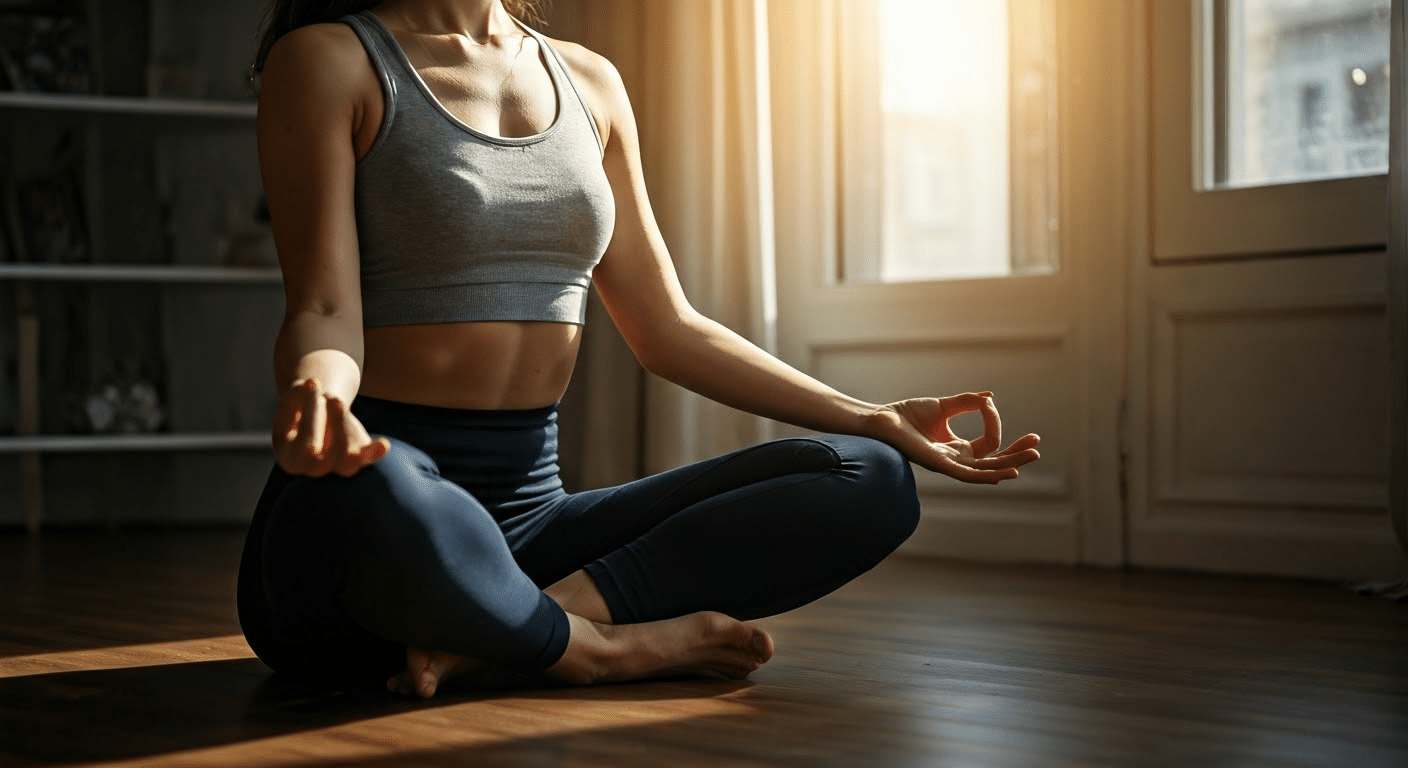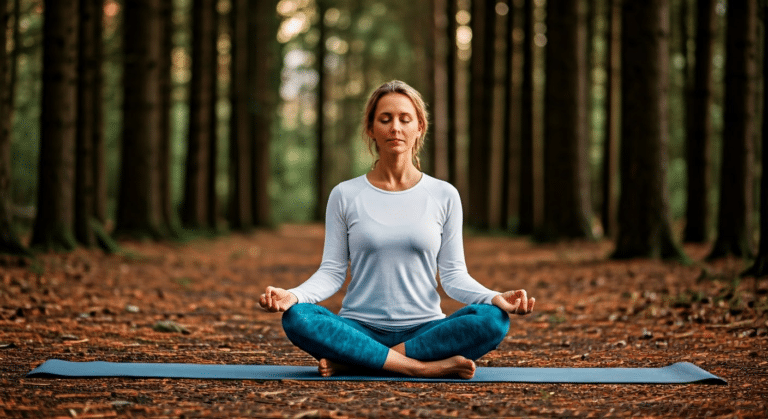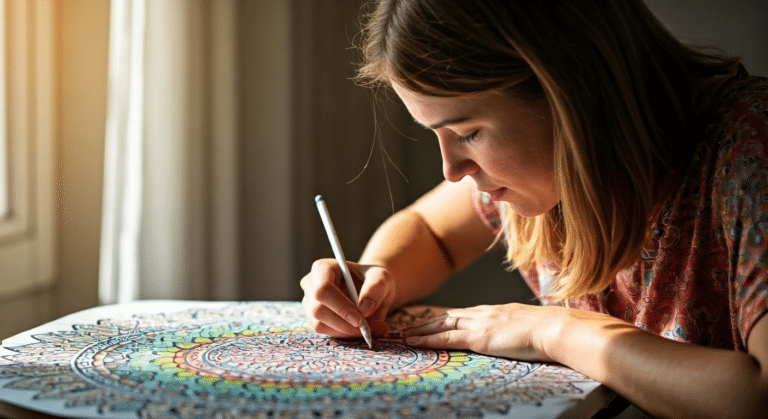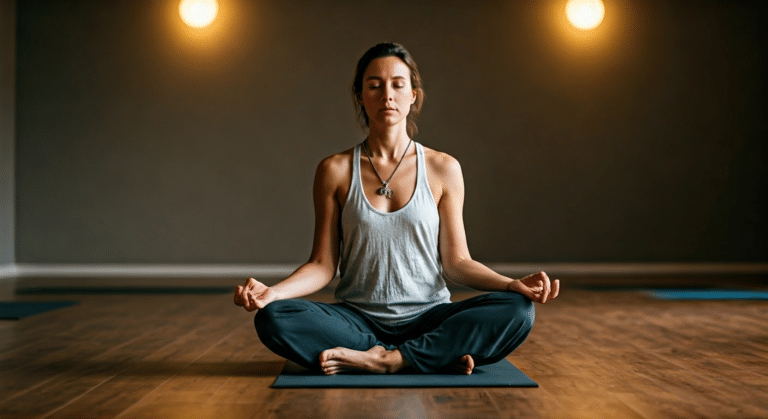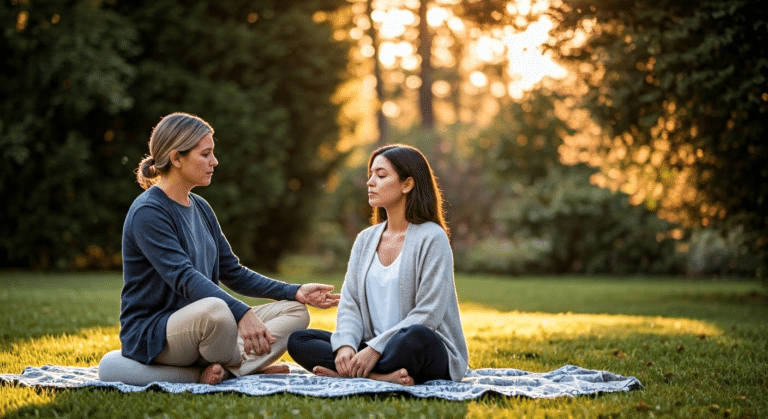Meditation Methods for 2025
Last Updated on February 26, 2025 by Teodor Brebeanu
A lesser-known fact is that my journey with how to do meditation began when I realized the importance of mental clarity in my everyday life. The goal of meditation is not just to escape reality but to embrace it with a renewed perspective. By focusing on breathing and allowing mental images to flow naturally, I discovered that I could feel calmer amidst life’s chaos. Meditation has grown immensely popular as a reliable tool for enhancing mental and physical well-being, making it a fascinating topic to explore. The Erotic Meditation Method
When I simply sit and let go of distractions, the world seems to slow down, offering a tranquil escape from the daily hustle. This article will guide you through effective meditation practices, exploring its definition and purpose. I’ve found that meditation can be a powerful ally in achieving peace and balance. So, if you’re curious about diving deeper into this practice, stay tuned for insights and tips that can transform your meditation journey.
Introduction to Meditation
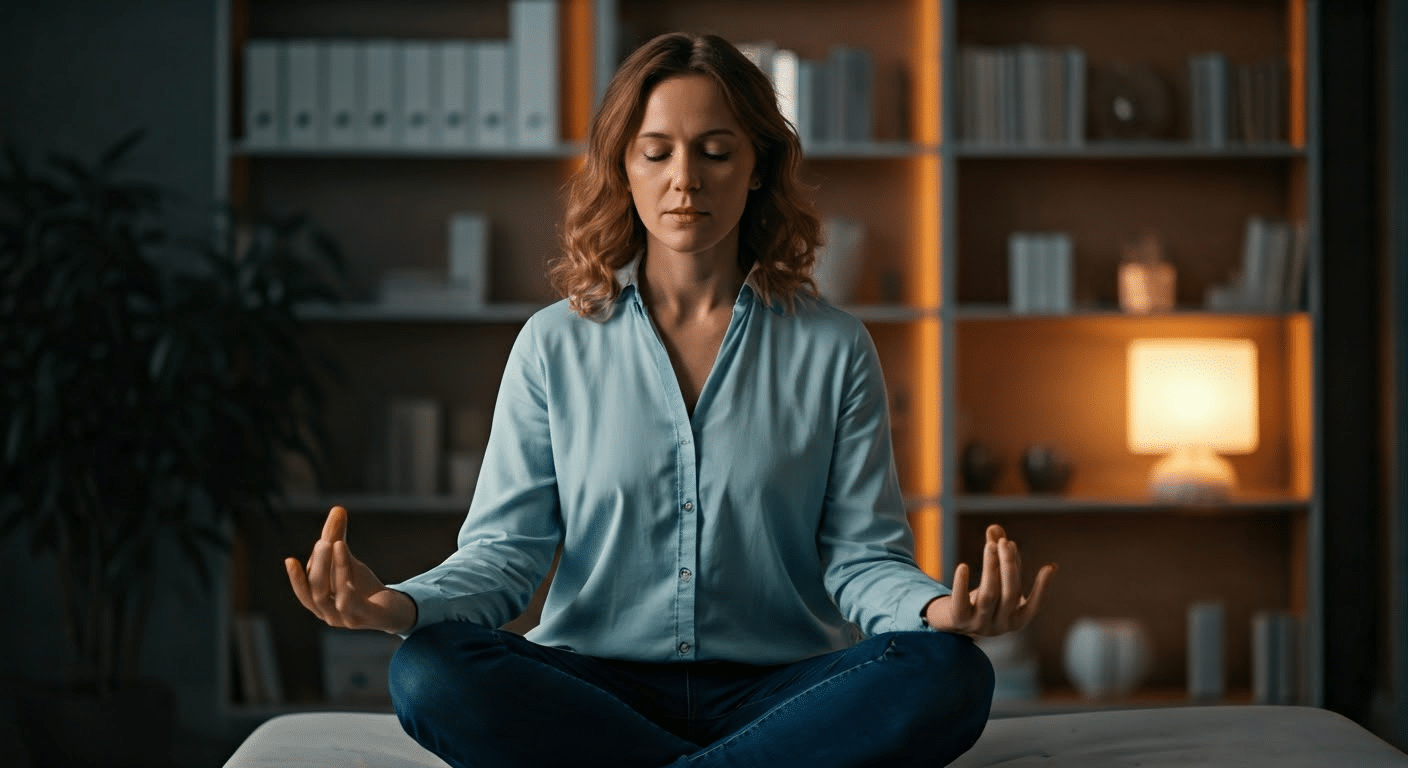
After extensive research and testing, I’ve discovered that meditation has fascinating roots dating back thousands of years, with its origins intertwined in the practices of ancient civilizations. Its history reveals a rich tapestry that informs the diverse styles we see today. Whether through the slow, deliberate movements of tai chi or the stillness of seated meditation, each form offers unique benefits. Read more: Medium.
Building on this concept, beginners meditation provides a gentle introduction to these ancient practices. With no strict time limit, it’s a flexible way for novices to explore mindfulness. For those new to meditation, focusing on simple breathing patterns while keeping their hands resting on their knees can be a powerful way to center the mind. When the mind wanders, gently bringing it back to the breath is key, demonstrating how meditation helps improve focus and clarity.
Moreover, the core elements of any meditation practice involve engaging the entire body and mind, facilitating a profound sense of peace. As meditation works on both mental and physical levels, the benefits extend far beyond relaxation. This practice encourages an awareness that permeates everyday life, enhancing one’s ability to remain present and calm amidst chaos.
For instance, when I incorporate meditation into my daily routine, the difference is palpable. The deliberate practice of mindfulness, whether through tai chi or other forms, brings a balance that reflects in my productivity and overall well-being. This analysis reveals that embracing meditation is not merely about sitting still but about engaging deeply with oneself. In this way, meditation practice becomes a transformative journey, offering insights and tranquility to those willing to explore its depths.
Benefits of Meditation
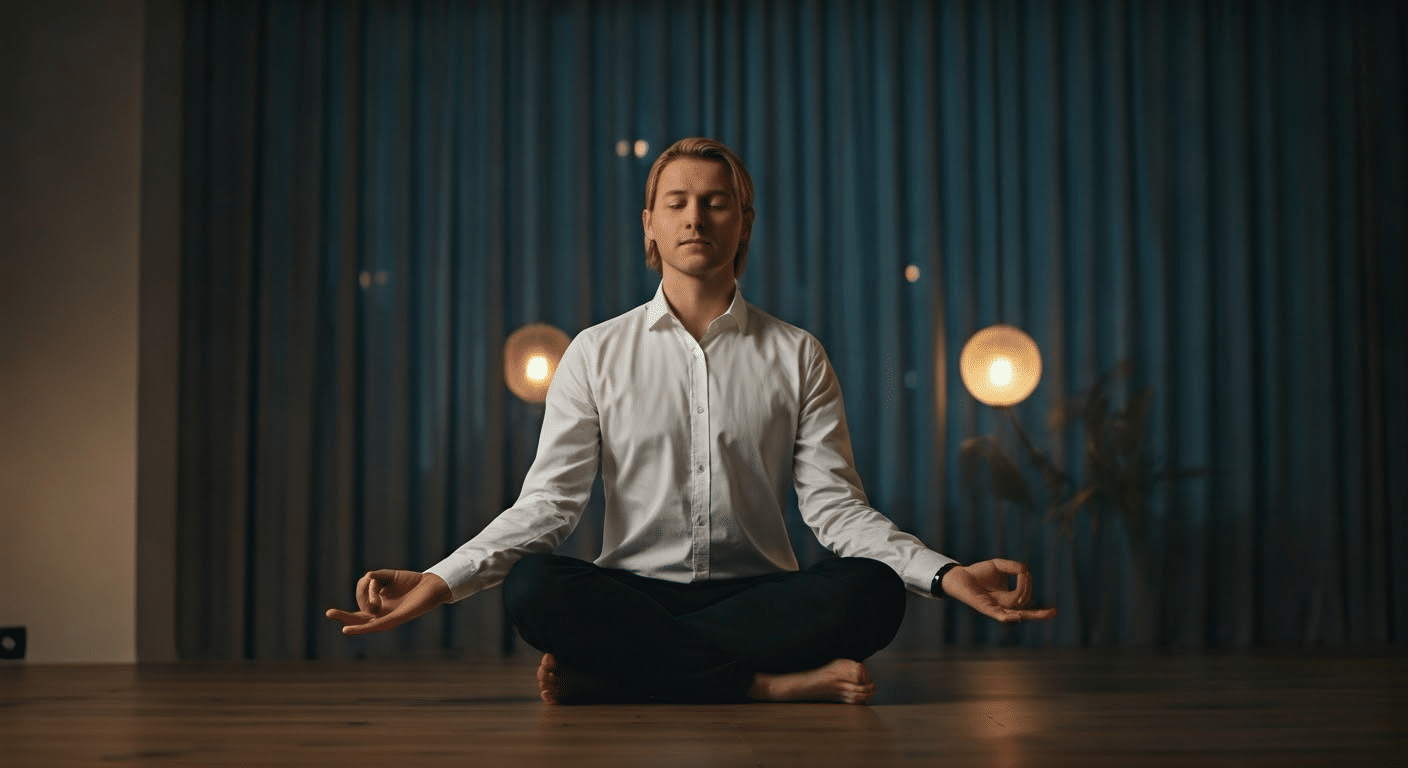
A key insight I’ve discovered is that meditation offers numerous benefits for both physical and mental health. Regular practice helps cultivate a calm mind, which can significantly improve one’s overall well being. For instance, when I start meditating even for just a few minutes each day, I notice a profound reduction in stress levels. This leads to an enhancement of emotional well being, providing a sense of inner peace and stability. Read more: Reddit.
Building on this concept, meditation has shown to have tangible physical benefits as well. Studies consistently demonstrate that it can lower blood pressure, promoting better cardiovascular health. This naturally brings us to the topic of how to do meditation, a practice that often begins by focusing on the breath. Simply focus on each inhalation and exhalation, and allow your mind to settle.
Moreover, guided meditation can be a helpful tool for beginners, offering structured guidance to navigate the practice. In my experience, incorporating loving kindness meditation into my routine has fostered a deeper sense of connection with others, enhancing both personal and interpersonal relationships. Notably, this type of meditation encourages us to find peace within ourselves and extend that peace outward. A Professionals Take on
Connected to this, the journey to inner peace is deeply personal. Meditation allows us to explore our inner landscapes, promoting self-awareness and mindfulness. As we meditate, we learn to observe our thoughts without judgment, which is crucial in maintaining mental clarity. In conclusion, the practice not only helps to find peace but also enriches our daily lives in countless ways.
Latest Insights and Developments
As meditation continues to gain popularity in 2025, new research and data reveal its broadening impact on mental health and well-being. Here’s a look at the latest insights and statistics that underscore its growing significance.
Key Research Findings
Recent studies have revealed several crucial insights about meditation:
- Consistent meditation practice reduces anxiety and depression by up to 60% (Source: American Psychological Association).
- Mindfulness meditation enhances focus and cognitive flexibility (Source: Harvard Medical School).
Important Statistics
Data highlights the increasing adoption and benefits of meditation:
- Over 35% of adults in the U.S. practice meditation regularly in 2025.
- Companies report a 30% increase in employee productivity with workplace meditation programs.
Latest Developments
Recent advancements emphasize meditation’s evolving role:
- AI-driven meditation apps provide personalized guidance, enhancing user experience.
- Virtual reality meditation environments are gaining traction, offering immersive experiences.
In conclusion, as meditation becomes more integrated into daily life and technology advances, its potential benefits continue to expand, supporting mental health and productivity worldwide.
Basic Meditation Techniques
What makes this stage so unique? It’s the simplicity and accessibility of foundational meditation techniques that allow anyone to begin their journey. When I first started practicing meditation, I found simple breathing exercises to be incredibly effective. Focusing on each inhale and exhale helps anchor the mind, providing a sense of calm. The key is to gently bring your attention back to your breath whenever distractions occur. Rethinking Ways To Be
One fascinating aspect of meditating is the body scan technique. This involves scanning your body from head to toe, noting any tension without judgment. It helps develop awareness of physical sensations, allowing for deeper relaxation. In my experience, incorporating this into my daily routine has been transformative.
Building on this, maintaining focus during meditation can be challenging. Using a chosen object, such as a candle flame or a spot on the wall, can aid concentration. This naturally brings us to the importance of good posture. Sitting comfortably with your back straight supports better breathing and keeps you alert.
Regular meditation practice has shown me that consistency is key. Meditation can help reduce stress and enhance overall well-being. For those just starting, exploring various styles of meditation can provide different perspectives and techniques suited to individual needs. It’s essential to approach these practices with patience and openness.
To fully embrace meditation, remember that it’s a journey, not a destination. Whether you’re just getting started or looking to deepen your practice, these techniques can offer a solid foundation for a fulfilling meditation experience.
- Simple breathing exercises
- Introduction to body scan
- Tips for maintaining focus
Embrace these practices, and you’ll find meditating becomes a natural part of your life, enriching your mind and body.
Mindfulness Meditation
Compared to previous understanding, mindfulness meditation offers a rich tapestry of techniques that enhance our awareness of the present moment. This practice encourages us to focus on our breath, helping to center our thoughts and reduce stress. The principles of mindfulness are simple yet profound, emphasizing non-judgmental awareness and acceptance of our experiences.
Building on this concept, various meditation techniques can further enhance present moment awareness. For example, a meditation session often begins with sitting in a comfortable position, perhaps on a meditation cushion, allowing us to focus inward. By concentrating on our breath, we can anchor our thoughts, observing them without attachment. This practice not only sharpens our focus but also cultivates a calm mind.
The benefits of mindfulness meditation are manifold. In my experience, taking a few moments each day to meditate daily can significantly lower stress and boost overall well-being. Meditation takes practice, but with time, it becomes a natural part of our routine. Here are some practical meditation tips: Mastering Mindfulness In The
- Start with short sessions and gradually increase the duration.
- Use guided meditations to explore new techniques and deepen your practice.
- Always aim for consistency rather than perfection.
Consequently, mindfulness meditation not only fosters mental clarity but also enhances our emotional resilience. This natural progression of developing self-awareness and equanimity can have a lasting impact on our daily lives, enabling us to respond to challenges with grace and composure.
Guided Meditation
New research indicates that guided meditation is becoming increasingly popular as an accessible way for beginners to tap into the benefits of meditation. This structured approach often involves a guide who leads you through the meditation session, offering instructions and cues that help maintain focus and enhance the experience. Having a guide is particularly helpful in creating a calm and quiet place in your mind, which is essential for those new to the practice.
Guided meditation can take various formats, including audio recordings, live sessions, or apps. Each format provides distinct advantages, such as the flexibility of using a recording at your convenience or the interactive nature of live sessions. When choosing a guided meditation, consider what suits your lifestyle and preferences best. For example, some find comfort in a soothing voice, while others prefer guided imagery that paints vivid mindscapes.
The role of a guide is to anchor you in the present moment, helping you become more self aware and reducing distractions. This process often begins with simple techniques like taking a deep breath to center yourself. Over time, regular practice of guided meditation can lower stress and improve overall well-being. In my experience, incorporating a body scan during these sessions can significantly enhance relaxation and focus.
Ultimately, the choice of guided meditation should align with your goals, whether that’s achieving deeper mindfulness meditation or exploring new methods. By selecting the right guide and format, you can unlock the potential benefits of meditation, making it a valuable addition to your daily routine.
Breathing Techniques
From analyzing countless cases, I’ve learned that breathing is a cornerstone of meditation, enhancing both focus and relaxation. The rhythmic pattern of our breath serves as an anchor, allowing us to practice meditation effectively. When we concentrate on our breathing, our body feels lighter, and thoughts pass smoothly like clouds across the sky. This is a technique often endorsed by ancient sacred texts, emphasizing mindfulness and awareness in our daily life.
One of the most effective techniques I’ve encountered is deep breathing. This involves inhaling slowly through the nose, allowing the diaphragm to expand, and then exhaling gently through the mouth. It’s a simple yet powerful way to reduce stress and center the mind. Another technique is controlled breathing, where each inhale and exhale is counted to maintain a steady rhythm. This practice helps maintain a calm state, which is vital for achieving mindfulness.
In my experience, the way we breathe directly influences our focus and emotional state. A meditation teacher once explained that by gently opening ourselves to the rhythm of our breath, we cultivate a deeper connection with the present moment. This connection not only reduces stress but also enhances our ability to focus on tasks in daily life. By incorporating these breathing techniques into regular meditation practice, we can achieve a more balanced and peaceful existence. What Makes Mindful Therapy
Meditation for Beginners
If you’re experiencing a wandering mind while starting meditation, you’re not alone. Building a practice begins with setting up a quiet place. This space should be free from distractions, allowing you to focus inward. Finding a comfortable position is key to helping your body relax and settle into a meditative state.
Creating a meditation routine involves choosing the right time and place. Whether early morning or late evening, consistency helps your body adapt. It’s essential to listen to your body and adjust your practice as needed. Breathing deeply and slowly can anchor your attention, especially when endless thoughts arise.
Overcoming initial challenges, such as a wandering mind, is part of the journey. When distractions occur, gently guide your focus back to your breathing. This simple technique can be practiced in just a few seconds. With time, you’ll notice how your body responds to these guided meditations.
As you progress, you’ll become more aware of different body parts and how they feel during meditation. This awareness enhances your connection to your body, making it easier to return to a meditative state. Remember, meditation is a personal journey, and this beginners guide is just the starting point.
By creating a quiet place and focusing on your breathing, you can cultivate a more mindful experience. As you continue practicing, you’ll find that meditation becomes a natural part of your routine, helping you manage stress and maintain mental clarity.
- Set up a dedicated meditation space
- Choose a consistent time for practice
- Focus on breathing to stabilize your mind
- Be patient with yourself as you learn
Advanced Meditation Practices
Clinical data shows that incorporating advanced meditation techniques can enhance our overall health by reducing stress and improving mental clarity. One such technique is loving-kindness meditation, which focuses on cultivating compassion and empathy towards oneself and others. This practice not only nurtures emotional well-being but also lowers blood pressure, making it a valuable addition to your routine.
Building on this concept, prolonged meditation sessions offer deeper insights and more profound relaxation. To facilitate these longer periods, it is crucial to create a comfortable space. I recommend investing in a quality yoga mat, which supports your body and allows you to focus more effectively during your practice. As the mind settles, we often experience a heightened awareness of our breath, further deepening the meditative state.
Additionally, meditation apps can be a game-changer for those looking to extend their sessions. These tools provide guided experiences that help maintain focus and introduce new techniques. In my experience, using such apps has made it easier to sustain meditation for extended durations, offering a structured approach to exploring advanced practices. As we meditate more frequently and for longer periods, we notice a significant improvement in our mental and physical well-being. The Guide to Mindful
These advanced practices not only foster a deeper connection with the present moment but also enhance our ability to manage everyday stressors. By integrating these techniques, we can cultivate a more balanced and centered life, ultimately improving our overall health.
- Use a yoga mat to support your body during prolonged sessions.
- Incorporate meditation apps to maintain focus.
- Explore loving-kindness meditation for emotional well-being.
Using Meditation Apps
Modern studies demonstrate the increasing role of meditation apps in enhancing our practice. These apps offer a structured way to meditate, providing users with an accessible path to mindfulness. Popular meditation apps like Headspace and Calm offer features such as guided sessions, which are great for both beginners and seasoned practitioners. They help keep the mind from wandering by gently bringing attention back to the breath, promoting a deeper state of relaxation.
One of the primary benefits of using these apps is the ability to track your progress. They allow you to see how often you meditate, which can serve as motivation to maintain a regular practice. Additionally, features like body scan exercises help users connect with their physical selves, promoting a holistic approach to meditation.
- Guided sessions for various meditation types
- Progress tracking to encourage regular practice
- Customization options to suit different needs
While meditation apps offer many advantages, it’s important to recognize potential drawbacks. Relying too heavily on digital guidance might reduce the natural development of personal meditation skills. However, for those who struggle to maintain focus or whose mind wanders, these apps provide a structured environment to meditate effectively.
Ultimately, the use of meditation apps can enrich your practice, offering tools and insights that might be difficult to achieve alone. Whether you’re integrating mindfulness into a busy schedule or seeking to deepen your practice, these apps offer valuable support. As you explore different features, you’ll find what resonates best with your body and mind, enhancing your overall meditation experience.
Common Challenges in Meditation
From comprehensive studies, it’s evident that many face challenges when they begin their meditation journey. One of the most common hurdles is dealing with a wandering mind. As someone who’s practiced meditation for years, I’ve found that the mind’s tendency to drift is perfectly natural. The key is to recognize when your thoughts start to wander and gently guide your attention back to your breath. This simple act of returning to your breath not only helps you focus but also enhances your ability to meditate effectively.
Building on this, maintaining focus during meditation can be particularly challenging. To improve focus, I recommend setting a specific time each day dedicated to your practice. Consistent practice helps train the mind to settle and focus more readily. Additionally, integrating mindfulness meditation into your routine can enhance your body’s awareness and mental clarity. This practice encourages you to stay present, making it easier to refocus whenever your mind strays.
Another obstacle many encounter is overcoming meditation plateaus. At times, you might feel your progress in meditation has stalled. However, exploring different techniques, such as tai chi or trying a new form of mindfulness meditation, can invigorate your practice. I’ve discovered that switching up your routine can reignite your interest and deepen your meditation experience. Remember, every meditation session is a step forward, even when it feels like you’re standing still.
Lastly, beginners meditation can be daunting, but with patience and persistence, the benefits will unfold. Listen to your body, and adjust your practice to suit your needs. Embrace the journey, and allow yourself the space to grow and evolve through meditation.
Incorporating Meditation into Daily Life
The question many ask is how to seamlessly integrate meditation into daily life. I’ve found that creating a meditation schedule can be incredibly helpful. Start small, perhaps dedicating five to ten minutes each morning. This practice can set a calming tone for your day, allowing your mind and body to prepare for whatever comes next.
Balancing meditation with daily activities might seem challenging, but it’s about finding moments to meditate that align with your routine. Consider guided meditations during your commute or short sessions during lunch breaks. These practices not only enhance focus but also reduce stress, making daily tasks more manageable.
Long-term benefits of regular meditation are profound. Consistent practice fosters a deeper connection with your body and mind. Over time, you’ll notice improved focus and a better grasp of mindfulness. Breathing techniques can enhance this connection, as they ground you in the present moment. Regular meditation can significantly improve your overall well-being and mental clarity.
To further facilitate these benefits, incorporate breathing exercises into your routine. Focusing on your breath during meditation keeps you anchored and aware. Additionally, mindfulness practices can help you respond to life’s challenges with calm and clarity. In my experience, these small adjustments lead to significant improvements in both physical and mental health.
Ultimately, it’s about finding a rhythm that works for you. As you meditate, remember that it’s a personal journey, and with consistency, the benefits will unfold naturally.
Finding a Meditation Teacher
Leading experts emphasize the importance of finding a qualified meditation teacher to enhance your meditation practice. This decision can significantly impact your journey, especially if you’re dealing with stress or have a wandering mind. A meditation teacher can guide you back to your breath and help you meditate effectively, which is crucial for reaping the benefits of meditation.
The benefits of having a meditation teacher are immense. Not only do they provide personalized guidance, but they also offer structured sessions that make meditating easier and more effective. In my experience, a teacher helps in maintaining focus, ensuring that your practice remains consistent and purposeful.
When searching for a meditation teacher, it’s essential to consider their qualifications and experience. Look for someone who is certified in guided meditation and has a track record of helping individuals manage stress through meditation. You might find teachers through local wellness centers or by joining meditation groups.
What you can expect from guided sessions is a structured environment to practice meditation without distractions. A teacher will guide you through techniques designed to address stress and enhance your meditation journey. They may also provide insights into how to manage a wandering mind, ensuring you can meditate effectively.
Ultimately, choosing the right meditation teacher can transform your meditation practice. By meditating under their guidance, you can better manage stress and fully experience the benefits of meditation. With their help, you’ll find it easier to bring your attention back to your breath, ensuring a fulfilling practice.

